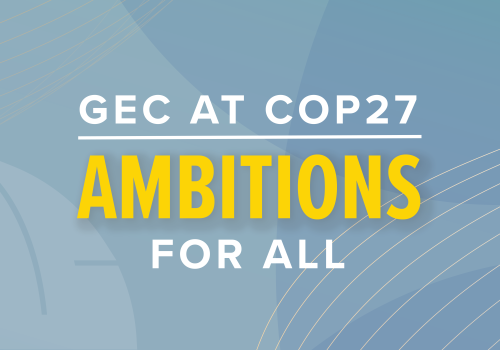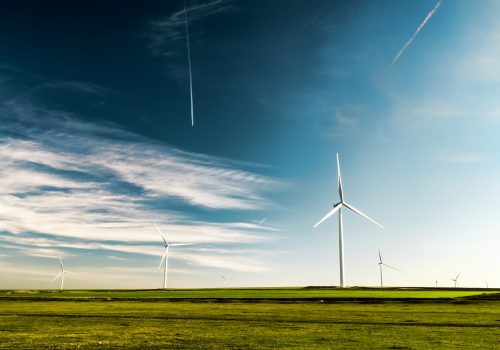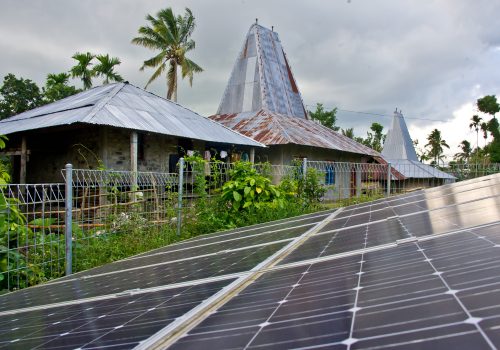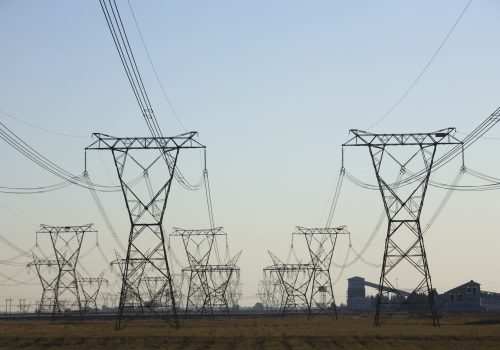The annual United Nations Conference of Parties is underway in Sharm el Sheikh, Egypt, with delegates from around the world gathering to address one of the most urgent of global imperatives: climate change and the energy transition. Central to the conversation is tackling carbon emissions, the leading contributor to planet-wide warming.
During last year’s conference, leaders reinforced the sense of urgency to take action. Since then, important moves have been made to drive progress. Notably, the United States, currently the world’s second-largest carbon emitter, took its biggest step yet in combating climate change with a $369 billion investment via the Inflation Reduction Act that will reduce US carbon emissions to an estimated 40 percent below 2005 levels by 2030. This is in addition to steps to fund a modernized grid and breakthrough technologies in the Infrastructure Investment and Jobs Act. These two landmark climate change laws not only aim to reduce climate emissions, but they also advance US investments in both energy security and grid resiliency as well as critical breakthrough technologies.
Yet a problem so daunting can leave us all wondering, how does the world move faster?
The energy transition will not happen without software
Policy goals and net-zero pledges encourage the adoption of innovations that will take time to develop and scale reliably, including renewable energy, hydrogen, and carbon capture and sequestration technologies. While it’s critical to invest in these long-term, high-impact levers, software is an investment that can pay dividends today and accelerate our ability to embrace electrification and decarbonization tactics.
Software’s superpower is the ability to marry human ingenuity with data, artificial intelligence and machine learning, digital modelling, computing power, and analytics engines to arrive at optimal solutions faster and with more confidence. By harnessing vast amounts of data, software can surface and predict outcomes in ways that the human brain simply cannot. This can make energy systems smarter and better equip the humans who operate them to optimize generation, orchestration, and consumption across the energy ecosystem.
This intersection of human and machine plays an essential role in a three-part formula for reducing the world’s carbon footprint, improving energy security, and growing access to reliable, sustainable, and affordable energy:
- Reduce energy waste starting today.
- Ensure the grid is resilient through real-time orchestration of resources.
- Accelerate the transition to zero- and low-carbon energy resources.
Objective 1: Reduce energy waste starting today
The three sectors responsible for about 80 percent of all carbon emissions are the energy, industrial, and transportation sectors. Any move to reduce waste in these areas today positively impacts our carbon footprint because the cleanest megawatt is the one never used.
Software optimizes operations so that businesses can minimize their energy use and drive efficiencies to new levels. Partnering with businesses across sectors to optimize operations at the point of energy consumption is a positive change anda key area of focus for innovation that drives decarbonization today. Manufacturing and aviation are great examples of industries that have already started using software to understand where operational inefficiencies lie—leading to savings on energy, time, and costs.
Another critical area of focus is decarbonizing today’s power sector. As the world electrifies, it creates more demand for power from today’s energy sources. The decarbonization of today’s power sector must occur in parallel, or our ambitions will fall short.
For many conventional power sources, the key to acting is knowing where and how to make an impact on carbon emissions. Software can help operators understand their current emissions level and reduce fuel consumption and harmful emissions in gas turbines by providing a clear blueprint for optimization and proactive maintenance opportunities for cleaner and more efficient operation.
Objective 2: Ensure the grid is resilient through real-time orchestration of resources
Energy security is key to human vitality. With increasing risks to the grid, especially the increasing frequency and intensity of storms that the grid was not designed to sustain, securing and making the grid resilient against blackouts has never been more important.
Software enables operators to see around corners and predict needs based on historic patterns and new, real-time information—an essential function for adapting to changing weather patterns and to the growth of renewable energy sources. Software can help utilities estimate and predict the amount of energy needed and control the different generation sources in real time to help ensure the grid maintains the critical balance needed for optimal operation during these unprecedented weather events.
Objective 3: Accelerate the transition to zero- and low-carbon energy resources
The electrical grid is one of the largest, most complex systems built by humans. There’s no “flip-the-switch” moment when the planet can immediately move to green electrons safely and reliably. As the world electrifies and new renewable energy sources are becoming more widely available, conducting electrons across the grid is growing in complexity. The grid wasn’t originally built for the balancing act required by these distributed and often intermittent energy sources. Each renewable resource brings unique opportunities and challenges to the grid’s stability and resilience and requires careful orchestration.
Software plays a critical role in helping grid operators meet the increasing demands for energy, predict needs based on historic patterns, and manage the bidirectional flow of energy brought on by distributed energy resources across the grid globally.
Moving forward, faster
The bottom line? The latest news from the COP27 reinforces the urgency for action but also the opportunity for innovation and technology to enable solutions today. Accelerating these efforts is mission critical. Partnership is critical.
Partnerships across all stakeholders—customers, investors, governments, NGOs and industry—are critical to ensuring the necessary progress is accomplished for sustainability across the energy ecosystem. For example, a coalition of energy transition leaders—Bechtel, Baker Hughes, Enppi, HSBC, the National Bank of Egypt, Petrojet, and GE Digital—are working to support decarbonization of select downstream facilities in Egypt, aligning plans with the country’s leadership of COP27.
GE’s founder Thomas Edison famously said, “I find out what the world needs, then I proceed to invent it.”
If the power of software to see the future can be harnessed, I am confident that we can solve the challenges of the energy transition together.
Scott Reese is the chief executive officer of GE Digital. GE is a presenting partner of GEC at COP27: Ambitions for All.
Related content
Learn more about the Global Energy Center

The Global Energy Center develops and promotes pragmatic and nonpartisan policy solutions designed to advance global energy security, enhance economic opportunity, and accelerate pathways to net-zero emissions.
Image: Lines of code. (Markus Spiske, Unsplash, Unsplash License) https://unsplash.com/license




